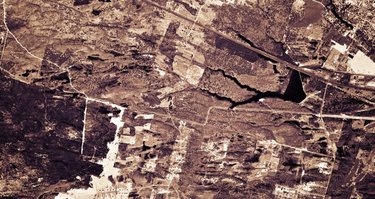Guilderland comprehensive plan to have major Pine Bush component
GUILDERLAND — No topic has taken up as much oxygen over the course of multiple meetings and public hearings on the update to Guilderland’s comprehensive land-use plan as protection of the Pine Bush Preserve.
That advocacy is now bearing fruit.
On Sept. 16, Supervisor Peter Barber told his fellow board members that he felt it was important “to pull the Pine Bush out for special attention.”
He noted there’s mention of the preserve in the prominently-placed town character section of the updated plan, but “I think I probably would start with a chapter on the Pine Bush because it’s probably the most-significant natural resource that we have in our town.”
Barber said the standalone chapter on the Pine Bush could include its history and information about the preserve commission, of which the town is a member.
“Then later on … in the park section you can talk about the agreements that the town has entered into with the Pine Bush to manage large swaths of land in the town of Guilderland, and DiCaprio Park, and more recently we took over the Fort Orange Homeowner Association.”
Barber said the 20 acres of fully-protected Fort Orange Homeowner Association land would then be turned over to the preserve to manage. “I think it’s good to recap some of those activities,” the supervisor said. “A lot of these things happen in 20-acre increments.”
He’s also looking to codify some longstanding review practices between the Pine Bush and the town..
“I think another thing that’s come up a couple of times that you may know, the planning board and zoning board … if there’s ever an application for land-use that’s in the study area for the Pine Bush, that application is referred to the Pine Bush,” he said. “It looks at its management plan and gives a detailed report back to the planning and zoning board. What I [did] find is that the process has not actually been codified. In other words, it’s not the zoning code or the subdivision regulations.”
Barber said of codification, “It’s just good practice,” and he’d like to see it included as one the plan’s recommendations to the town.
Sept. 16 meeting
True to form, the public hearing portion of the meeting was dominated by volunteers from Save the Pine Bush.
The not-for-profit organization’s members asked the town board to, among other things:
— Adopt a formal goal to acquire all remaining privately-owned, undeveloped Pine Bush land;
— Align town zoning with the Pine Bush Commission’s vision map; and
— Halt further development along the Route 155 corridor north of Route 20.
Robyn Gray, chair of the Guilderland Coalition for Responsible Growth, questioned data used in traffic studies cited in the update to the plan, citing as an example discrepancies in traffic counts taken along Dunnsville Road which showed a 1.9 percent growth rate between 2002 and 2019, but showed a higher 9 percent increase for the period spanning 2015 to 2024.
She said the town needed to perform a real-time traffic analysis, not one that utilized “computer-generated stuff.”
She also questioned the date the data was taken, November 2021, still in the thick of the COVID-19 pandemic, a time when traffic volume was down across the nation.
For his part, Barber said he would have Town Planner Ken Kovalchick “check to see whether” the data discrepancy was valid. About the date the data was taken, Barber said it was likely an error, positing that “all the data says 2024 and it’s probably just a typo,” and as for the data itself, Barber said it derived from the state Department of Transportation “road count” taken in specific years, including 2015 and 2024.
Also during the Sept. 16 meeting, Barber highlighted an update regarding drinking water protection. He said that the town had been collaborating with the Capital District Regional Planning Commission (CDRPC) since the spring to develop a drinking water source protection plan for the Watervliet Reservoir, owned by the city of Watervliet and also Guilderland’s main source of potable water.
With that process nearing completion, Barber said the intention was to incorporate recommendations made in the drinking water protection plan into the comprehensive plan update.


